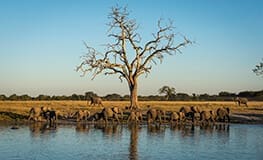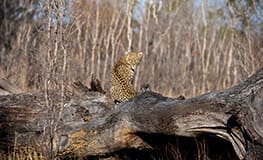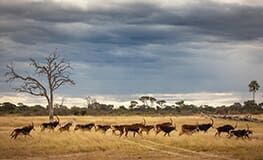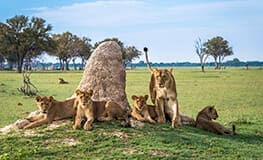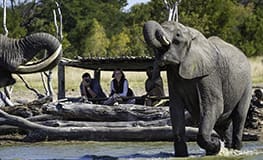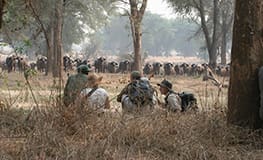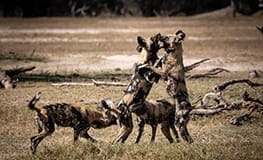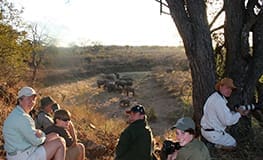Hwange National Park
At 5656 mi² (14,651 km²), Hwange is Zimbabwe’s largest national park. Besides its vastness, Hwange also boasts incredible quantity and diversity of wildlife; in fact, Hwange possesses the second largest mammal diversity of any park in the world!
This open, uncrowded park is subdivided into northern and southern sections. The former is dominated by a plateau of mudstone and basalt, interspersed with rocky outcrops (kopjes). During the dry season, animals primarily rely on waterholes and springs for fresh water, which provides stellar game-viewing opportunities, especially of elephant herds. This is also the area where the Painted Dog Conservation Center is located. Conversely, the southern section is more ecologically diverse, but dominated by the semi-arid Kalahari sand veld. The best time to visit either section is during the dry season (June to October).
Regarding wildlife, Hwange is most renowned for its elephant population. Other wildlife commonly seen include lion, giraffe, zebra, greater kudu, impala, wildebeest, tsessebe and black-backed jackal. Leopard, wild dog (painted wolf), bat-eared fox, serval, honey badger, civet, sable antelope and roan antelope are occasionally seen. There are also over 400 bird species, including the kori bustard, Bradfield’s hornbill, crimson-breasted shrike, swallow-tailed bee-eater, violet-eared waxbill and scaly-feather finch, and numerous birds of prey.

